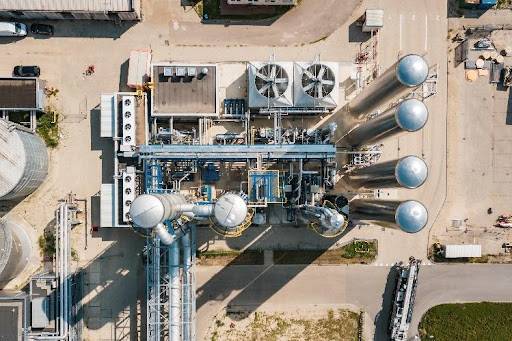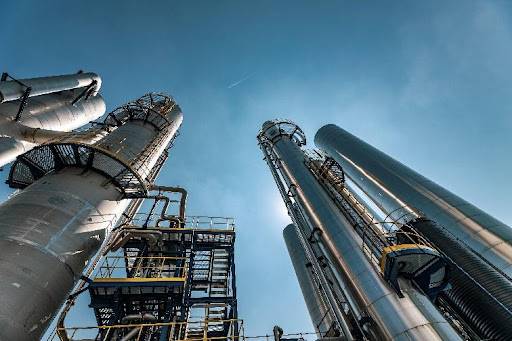Carbon Capture & Storage
According to the Klimaatakkoord, CCS (Carbon Capture and Storage) is the most obvious option for achieving CO2 emission reduction in the short term for several industrial processes. The necessary sustainable energy and technology to achieve extensive emission reduction from industrial production processes is expected not to be sufficiently available until 2030. In addition, in some sectors, almost pure CO2 is released that can be captured at relatively low cost. Of the more than four hundred companies that fall under the ETS, a small 10% is responsible for 85% of the total CO2 emissions. The majority of these companies are concentrated in the port areas. This contributes to a cost-efficient rollout of CCS. Examples of large point sources of CO2 are steel production, refineries, stoomkrakers, AVI's and ammonia production.
CCS will particularly play a role as a technology for existing installations that want to reduce their CO2 emissions in the short term, as well as a technology for new installations in hard-to-abate sectors (cement, AVI's, etc.), and possibly for the production of blue hydrogen and for negative emissions (BECCS).
It provides CO2 reduction and the industry buys time with it to invest in new developments (such as electrification and hydrogen) and thus prevents capital destruction. The IEA has calculated that with CCS, the energy transition will ultimately become cheaper. For the implementation of CCS, a reduction in costs is needed, which can be realized by increasing the energetic efficiency of the capture, improving the lifespan of solvents, and developing an affordable transport and storage infrastructure. Due to the impact on infrastructure and the societal debate around CO2 storage, societal embedding is necessary.
Based on current energy scenarios, CCS (Carbon Capture & Storage) will contribute at least 20% to the total CO2 emission reduction. Where possible, CCS is combined with the reuse of CO2.
Targets CCS
The goals for CCS are as follows:
⦁ Implementation of at least one large-scale, or several small-scale CCS project(s) (order of magnitude Mt/year) in the period 2023-2025 with capture of CO2 in the industry at one or more point sources and storage under the North Sea in, for example, one or more empty natural gas fields;
⦁ Realization of 7 Mt/year of CCS in the period after 2025;
⦁ Cost reduction of CCS;
⦁ Reducing process risks and reducing environmental impact;
⦁ Social acceptance of CCS.
Carbon Capture & Utilisation
CO2 can be used as a raw material. CCU processes relate to the capture and possible concentration of CO2, transport (if necessary), the use of CO2 as a raw material in products and processes, and the end-of-life situation. So there is overlap with CCS (Carbon Capture and Storage) in the initial part of the trajectory. In the production of some products such as iron and steel, in addition to CO2, CO is also released via the residual gases. CO is more reactive and, because it contains more energy, also more valuable, than CO2. When applying CO2 as a raw material, a distinction can be made between direct use and conversion of CO2 into new products.
⦁ Examples of direct use include the supply of CO2 to the greenhouse horticulture, the use of CO2 in the soft drink industry, and the use of CO2 in the extraction of fossil fuels (EOR).
⦁ In conversion, CO2 and CO are used as raw materials for the production of chemical building blocks, fuels, monomers/polymers, or via mineralization for the production of construction materials or the curing of concrete.
Worldwide, the current industrial application is limited to approximately 230 million tons per year, despite the fact that CO2 is abundantly available at low cost. By comparison, the global emission of CO2 is about 37 billion tons per year. However, for many production processes, a concentrated and pure stream of CO2 is needed. Moreover, many processes to utilize CO2 as a raw material are still in an early stage of development.
Since 2019, the waste incinerator AVR has had a CO2 capture installation in Duiven (GLD), with which CO2 is captured from flue gases (60-80 kton/year). In its pure, liquid form, it then leaves the factory and is transported in tank trucks to greenhouse growers in the region (see the photo below of the capture installation at AVR Duiven).
The waste incinerator Twence has also been capturing CO2 from flue gases for some time and converts this into sodium bicarbonate, where it is used for flue gas cleaning. This demonstration project saves 3 kton of CO2 emissions per year. In the course of 2023, Twence will start using a second CO2 capture installation that will enable the capture of 100 kton of CO2 per year, which will subsequently be supplied to greenhouse growers in the region and partially converted into other useful products.



Brigitte Jacobs
E: brigitte.jacobs@tno.nl T: (+31) 06 1538 3713
Pilot projects
The project database provides a good overview of relevant projects in this field. Within CCUS, one can search for fermentation and gasification.
Want to read more?
CATO is the Dutch national R&D program for CO2 capture, transport, and storage in which a consortium of nearly 40 partners collaborates. On the CATO website, you can find a lot of relevant information about CCUS: https://www.co2-cato.org/
- MMIP6: Click here for the document